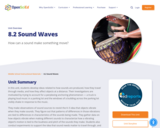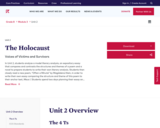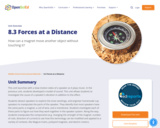
In the first half of Unit 3, students delve deeper into their chosen areas of intervention in the life cycle of plastic. Students choose a personal action to respond to the issue of plastic pollution, such as deciding to use less plastic or recycle more, communicating with officials, or researching an invention. They will form triads with classmates who have chosen the same category of action plan; together, they will determine how to coordinate their personal actions to be used in their documentary clip. Each homework includes the opportunity to enact and take notes on this personal action. Each lesson includes in-class time to discuss the results of the action plan and to further enact it through research or other efforts. In addition to working on their action plan, students will write their documentary script over the course of the first half of the unit. First, they review the Model Documentary Script, determining the characteristics of a strong narrative lead. Then each member of the triad practices these narrative writing skills by creating a lead to their documentary script. Triads work together to choose, revise, or combine their narrative drafts into one lead for their documentary script, focusing on eliminating redundancy and wordiness. Students then divide the remaining three sections of their documentary script among their triad, so that each student writes either the argument, action plan description, or conclusion. Before the mid-unit assessment, students engage in a Tuning protocol to improve the content of the script, focusing on presenting findings (including descriptions, facts, details, and examples) in a focused and coherent manner. For the mid-unit assessment, students demonstrate their revision skills, using the knowledge gained from the Tuning protocol to improve their section of the script.
In the second half of Unit 3, students work in their triads to create a storyboard, using visuals to clarify their claims and findings as well as to emphasize the points in their documentary script. They then learn how to pitch their documentary to potential film producers, observing a model pitch and using a Tuning protocol to practice and refine their presentation skills, such as using appropriate eye contact, adequate volume, and clear pronunciation. Finally, in the end of unit assessment, each student in the triad pitches a part of their documentary script, focusing on using formal English, domain-specific vocabulary, their storyboard visuals, and their presentation skills.
- Subject:
- English Language Arts
- Material Type:
- Unit of Study
- Provider:
- EL Education
- Date Added:
- 05/17/2024




